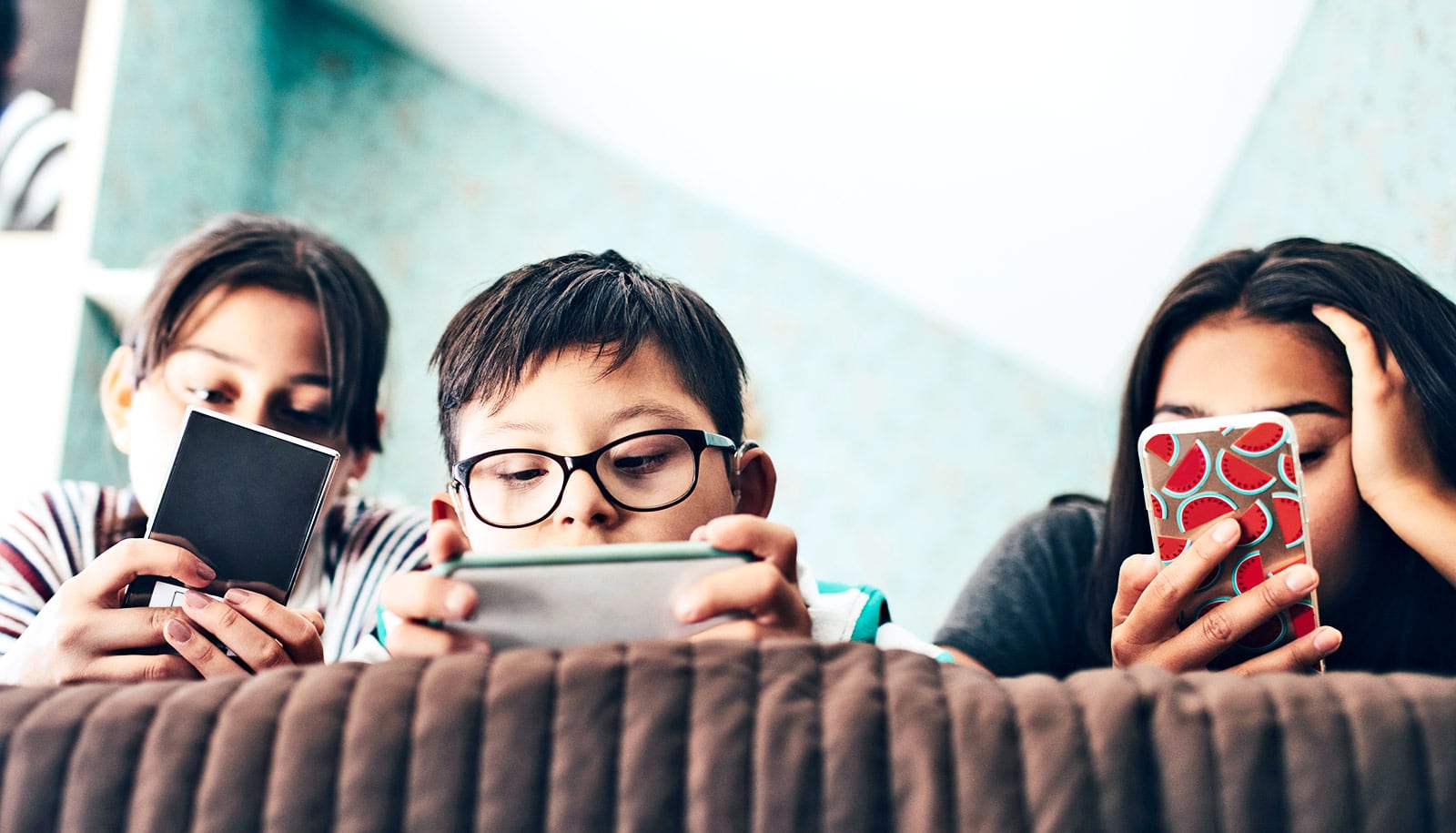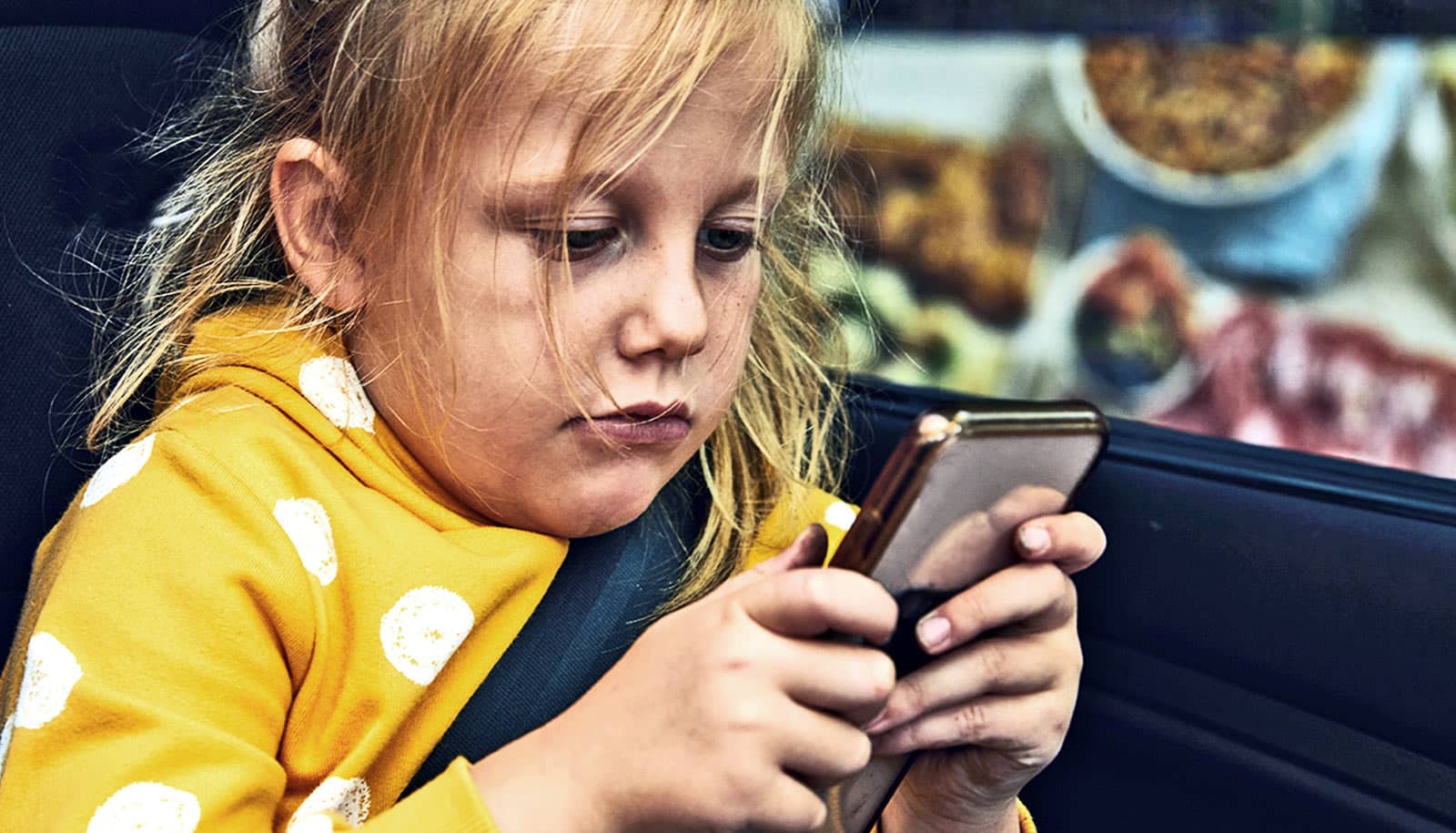A new study finds no meaningful association between the age at which children receive their first phones and their well-being, as measured by grades, sleep habits, and depression symptoms.
The study is unusual because it followed a group of more than 250 children for five years during which most of them acquired their first cell phones. Instead of comparing phone-using kids with those who don’t have phones at a single point in time, the scientists tracked the participants’ well-being as they transitioned to phone ownership.
“There doesn’t seem to be a golden rule about waiting until eighth grade or a certain age.”
“We found that whether or not the children in the study had a mobile phone, and when they had their first mobile phone, did not seem to have meaningful links to their well-being and adjustment outcomes,” says lead author Xiaoran Sun, who was a postdoctoral scholar at Stanford Medicine and Stanford Data Science when the study was conducted.
For parents wondering when to get their child a phone, she says, “There doesn’t seem to be a golden rule about waiting until eighth grade or a certain age.”
Early (or late) phone acquisition
For the study, published in Child Development, the researchers followed a group of low-income Latino children in Northern California as part of a larger project aimed to prevent childhood obesity. Little prior research has focused on technology acquisition in non-white or low-income populations, the researchers say.
The average age at which children received their first phones was 11.6 years old, with phone acquisition climbing steeply between 10.7 and 12.5 years of age, a period during which half of the children acquired their first phones. According to the researchers, the results may suggest that each family timed the decision to what they thought was best for their child.
“One possible explanation for these results is that parents are doing a good job matching their decisions to give their kids phones to their child’s and family’s needs,” says senior author Thomas Robinson, a professor of child health, of pediatrics, and of medicine. “These results should be seen as empowering parents to do what they think is right for their family.”
Early phone acquisition was not linked to problems, he notes, but neither was late phone acquisition, and “if parents want to delay, we didn’t see negative effects of that, either.”
What age is best?
When deciding to give a child a mobile phone, parents typically weigh many factors, such as whether the child needs a phone to let parents know their whereabouts; access the internet or maintain social connections; how much the phone may distract the child from sleep, homework, or other activities; and whether the child is mature enough to handle risks such as exposure to social media, cyber bullying, or violent online content.
Prior research about the effects of children’s mobile phone ownership had mixed results, with some studies suggesting that phones impair sleep or grades and others showing no effect. Previous studies were limited because most of them collected data at only one or two time points.
In the new study, children were 7 to 11 years old when the study began and 11 to 15 by the conclusion of the research. Each child and one of their parents participated in assessments at baseline and annually afterward, for a total of five assessments per participant.
At each assessment, the researchers asked parents whether their child owned a mobile phone and whether it was a smartphone. The midpoint in time between the last visit when the child did not own a phone and the first visit when he or she did own a phone was computed as the acquisition age.
At each visit, children completed a standardized questionnaire to assess symptoms of depression. Parents reported the child’s most recent school grades and the child’s typical bedtime and waking time for school and non-school nights; they also answered a questionnaire about their child’s sleepiness during the day.
After each visit, children wore accelerometers on their right hip for a week, and the data was used as an objective measure of sleep onset and sleep duration each night.
The researchers controlled the analysis for several possible confounding factors, including the child’s age at the start of the study, child’s sex and birth order, the child’s and parents’ birth country, the parents’ marital status and education level, family income, how often English was spoken at home, and how far the child had progressed through puberty.
About 25% of children received phones by age 10.7, and 75% by age 12.6. Nearly all children had phones by age 15 years. Among children who owned phones, 99% had smartphones by the end of the study. The timing of children’s phone acquisition was similar to what has been recorded in cross-sectional US samples.
Sleep and phones
The scientists investigated whether children’s well-being outcomes differed based on whether they had their own mobile phones and what happened to their well-being outcomes when they acquired their own phones (transitioning from not owning to owning a phone). They also performed analyses to test whether children’s well-being differed depending on the age children received their first mobile phone.
Initial comparisons of phone-owning versus non-phone-owning status showed some indications of differences: Whereas the entire group’s depression scores dropped over time, meaning they were less depressed, the decrease was slower when children owned phones than when they did not.
The researchers also noted possible effects on sleep: Parents reported that kids had less sleep on school nights when they owned a phone than when they didn’t own a phone—although this observation was not corroborated by the measures of kids’ sleep from the accelerometer data. The accelerometer data showed that when children didn’t own phones, they had slightly more sleep on non-school nights.
Use your best judgement
However, when the team controlled for the statistical effect of making several comparisons on the same set of data, none of these correlations met the criteria for statistical significance.
The researchers performed further analyses to see if children’s characteristics interacted with phone ownership in explaining their well-being outcomes. Mobile phone ownership was associated with lower levels of depressive symptoms for boys than girls, and less depression for children with lower versus higher sexual maturity. Phone ownership was also associated with less sleep among children with higher maturity. These results highlight possible relationships to examine more closely in future studies.
When the analyses were conducted only on smartphones (vis-a-vis any mobile phone), the results were similar. The overall pattern of results indicates that, in general, technology ownership was not found to be linked in either positive or negative ways to children’s well-being. The researchers note it may be more important to study what children are doing with their technology than simply whether they own a phone.
“These are average trends on a population level,” Sun says. “There can still be individual differences. It doesn’t mean you can’t take your kid’s phone away if you think it’s taking too much sleep time.”
The team is conducting research on how people use their phones as part of the Stanford School of Medicine’s ongoing Human Screenome Project.
Also, the scientists note, the study did not give children completely unfettered access to phones, as their parents were making decisions about their technology use.
“To the level we can measure, the timing itself [of acquiring a phone] doesn’t seem to be a key factor because it’s happening in the broader context of parenting,” Robinson says. “It’s not an argument for kids to say to their parents, ‘See, there are no impacts of phones.’ Parents need to use their best judgment about what is right for their child, as indeed they seem to be doing.”
The research team includes members of Stanford Bio-X, the Stanford Cardiovascular Institute, the Stanford Wu Tsai Human Performance Alliance, the Stanford Maternal and Child Health Research Institute, the Stanford Cancer Institute, and affiliates of the Stanford Institute for Human-Centered Artificial Intelligence and the Stanford Woods Institute for the Environment.
The National Heart, Lung, and Blood Institute; the Stanford Data Science Scholarship; the Stanford Maternal and Child Health Research Institute; and the Stanford Medicine Department of Pediatrics funded the work.
Source: Stanford University


